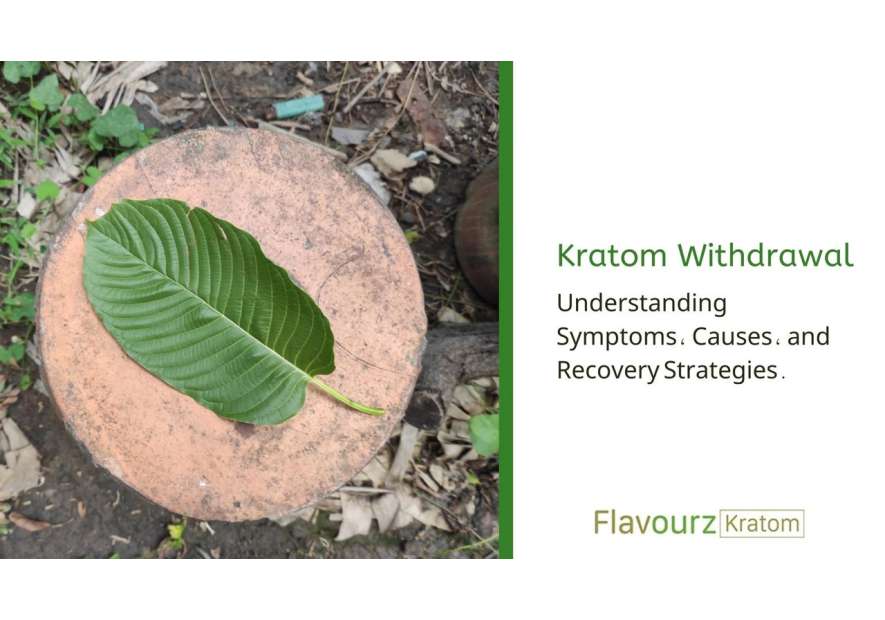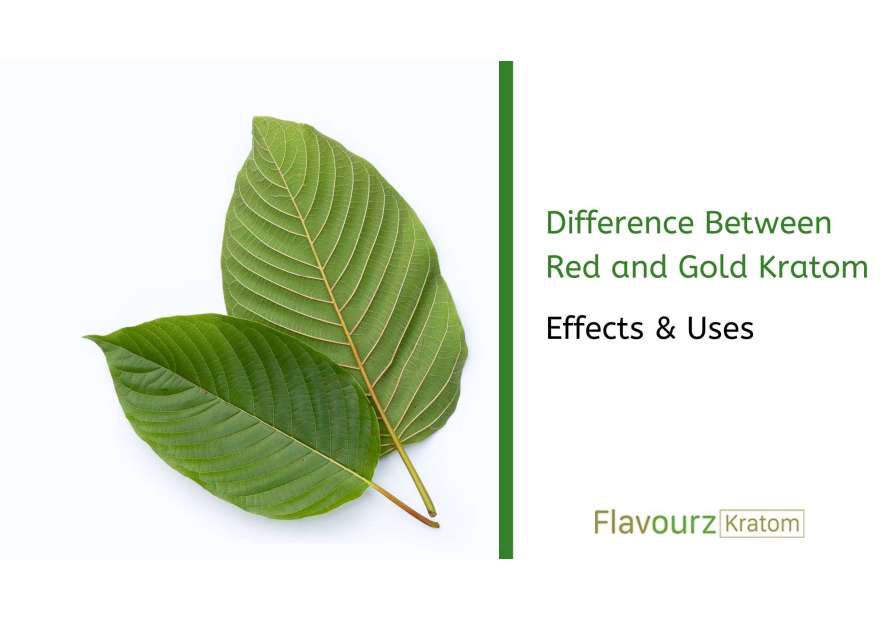Kratom Withdrawal: Understanding Symptoms, Causes, and Recovery Strategies

Kratom withdrawal typically lasts 4-7 days for most people, with symptoms starting 12-48 hours after the last dose. The timeline varies based on usage history, dosage, and individual factors.
| Timeline Stage | Duration | Key Symptoms |
|---|---|---|
| Initial Phase | 12-48 hours | Anxiety, muscle aches, restlessness |
| Peak Phase | Days 2-4 | Intense symptoms, nausea, mood changes |
| Recovery Phase | Days 5-7 | Gradual improvement, lingering fatigue |
| Post-Acute Phase | 2+ weeks | Occasional mood changes, mild cravings |
Kratom withdrawal can be challenging, but understanding the timeline, symptoms, and recovery strategies makes the process more manageable. This guide provides comprehensive information on what to expect during kratom withdrawal, effective coping strategies, and safe treatment approaches.
Based on our 25 years of experience at Flavourz Kratom serving over 10,000 customers, we've witnessed many users successfully manage their kratom relationship. Withdrawal can occur when someone stops using kratom after regular or high-dose use.
Symptoms may include anxiety, muscle discomfort, sleep difficulties, and cravings. For those experiencing withdrawal, finding best kratom products for controlled tapering can help ease the transition process.
Where to purchase kratom?
You can buy kratom through a physical store or online kratom sale, which can support energy, focus, and overall well-being when used properly. People seeking energizing effects often choose white hulu kratom.
What Is Kratom
Mitragyna speciosa, commonly known as kratom, is an herbal leaf from a tree of the Rubiaceae family. This tropical evergreen tree, native to Southeast Asia, has been traditionally used in countries like Thailand, Indonesia, Malaysia, Cambodia, Myanmar, and Papua New Guinea.
Since at least the 19th century, kratom has been part of daily life in these regions. Historically, people consumed kratom by chewing fresh leaves or brewing them as tea.
Today, kratom is commonly available in many forms as a dietary supplement. Popular kratom products include:
- Kratom raw leaf
- Kratom Powder
- Kratom Extracts
- Kratom Tinctures
- Kratom Resin
- Kratom capsules
- Kratom Gummies
- Kratom tablets
- Kratom chewables
- Kratom drinks
In our experience at Flavourz Kratom, customers often seek kratom for various wellness purposes. Here are six key benefits that users commonly report:
- Enhanced alertness, focus, and energy levels
- Natural comfort support
- Improved mental clarity and focus
- Promotes calmness and relaxation
- Mood-enhancing properties
- Balanced effects supporting overall well-being
The effects of kratom vary widely based on the amount taken, the quality, method of use, and individual factors. People who use kratom in smaller amounts often report energizing effects that boost alertness and combat fatigue.
At higher amounts, users may experience more relaxing effects. Kratom tablets provide a convenient and consistent option for those seeking reliable effects from kratom's natural compounds.
What is Kratom Withdrawal?
When someone uses any substance regularly for an extended period, the body can become accustomed to it. This means the body may experience uncomfortable physical symptoms when stopping use, especially if discontinued suddenly.
Common signs include sweating, nausea, restlessness, and mood changes. During regular kratom use, many people experience positive benefits.
However, when someone stops using kratom after consistent use, they may face challenges often referred to as kratom withdrawal. Withdrawal occurs when physical and mental symptoms appear after discontinuing use.
According to research published by American Addiction Centers, kratom withdrawal symptoms have been documented in medical literature. Symptoms can range from mild to more intense based on the person's usage history.
In my five years working with kratom users at Flavourz Kratom, I've observed that withdrawal experiences vary greatly between individuals. Understanding kratom withdrawal is valuable if you plan to use it regularly and want to stay informed.
For those exploring different strains, you can buy Malay kratom online and see how it fits into your wellness routine.
Kratom Withdrawal Symptoms
Like any wellness supplement, kratom has recommended usage guidelines. Sometimes exceeding these guidelines can cause physical, mental, and emotional symptoms.
This can occur with kratom as well, resulting in what's known as kratom withdrawal. To get the best results from kratom, users should follow proper measurement methods, such as using a digital scale for accuracy.
According to research from medical institutions, individuals who develop moderate to severe kratom dependency commonly experience withdrawal symptoms. Research shows that kratom withdrawal affects everyone differently.
Here are the commonly reported symptoms:
Physical Symptoms
- Muscle Aches and Discomfort: Persistent muscle tension, stiffness, and weakness that can make movement uncomfortable.
- Stomach Issues: Abdominal discomfort, cramping, and digestive upset, often with nausea.
- Digestive Changes: Loose bowel movements that can lead to dehydration if not managed properly.
- Nausea: Feeling queasy or unsettled, often accompanied by stomach discomfort.
- General Discomfort: Overall feeling of being unwell, similar to mild flu symptoms.
Sleep and Energy Symptoms
- Sleep Difficulties: Trouble falling asleep or staying asleep due to restlessness or discomfort.
- Restlessness: Feeling agitated or fidgety, making it difficult to relax.
- Fatigue: Feeling tired or lacking energy during the day.
- Difficulty Concentrating: Struggling to focus due to mental fogginess.
Emotional Symptoms
- Mood Changes: Feeling low, hopeless, or disinterested in activities.
- Irritability: Experiencing mood swings and increased sensitivity to stress.
- Anxiety: Feeling worried, fearful, or apprehensive more than usual.
- Emotional Ups and Downs: Sudden shifts in mood or emotional sensitivity.
- Cravings: Strong urges to use kratom again for comfort.
Other Common Symptoms
- Excessive Sweating: Increased perspiration, particularly during sleep or stress.
- Runny Nose: Continuous nasal drainage due to increased secretions.
- Temperature Sensitivity: Sudden feeling of being too hot or too cold.
- Excessive Yawning: Frequent yawning accompanied by feelings of tiredness. These symptoms are generally less common with gentle strains like red Malaysian kratom.
How Long Does Kratom Withdrawal Last?
Understanding the duration of kratom withdrawal is important for planning and preparation. The length of withdrawal can vary significantly from person to person.
Some individuals may experience a shorter, milder withdrawal period, while others may have a longer, more intense experience. Several factors influence how long kratom withdrawal lasts:
- Daily Usage Amount: Higher amounts of kratom may lead to a longer withdrawal period. Research suggests that users should follow standard dosing guidelines and consider using measured amounts or pre-measured products like capsules or tablets.
- Duration of Use: Regular, long-term use may result in a longer withdrawal timeline. Users benefit from professional guidance to achieve the best results and avoid negative symptoms.
- Individual Tolerance: People who have developed tolerance may experience extended withdrawal. According to research, kratom works best when used in appropriate amounts, though this varies based on individual health history.
- Other Medications: Kratom may interact with other medications, potentially affecting withdrawal symptoms. People taking medications for health conditions should consult healthcare providers.
- Approach to Stopping: Gradually reducing use versus stopping suddenly can significantly impact withdrawal duration and intensity.
Based on our experience helping customers at Flavourz Kratom over 25 years, we've seen that a gradual approach typically results in more comfortable transitions.
Kratom Withdrawal Timeline
Kratom withdrawal research is still developing in the scientific community. The intensity and length of withdrawal vary from person to person based on usage history, individual health, and other factors.
The kratom withdrawal timeline duration is closely related to the level of dependency, which several factors influence. Biology, genetics, and personal health history play important roles.
Other health conditions, lifestyle factors, and environmental stressors like ongoing life challenges may also impact the severity and timeline for withdrawal.
According to medical research, kratom withdrawal symptoms typically begin 12 to 48 hours after the last dose and can last anywhere from three to seven days. However, each person's experience is unique.
Some people have mild symptoms that resolve quickly, while others may experience more noticeable withdrawal effects. The kratom withdrawal symptoms duration can be understood in several stages:
- Initial Phase (0-2 days): During this early stage, withdrawal symptoms are often mild and may include sleep difficulties, muscle soreness, and low energy.
- Peak Phase (2-4 days): As the body adjusts, symptoms may intensify, characterized by nausea, digestive upset, mood changes, and physical discomfort.
- Recovery Phase (4-7 days): Symptoms gradually improve, but some people may still experience lingering effects like sleep issues, fatigue, and mood sensitivity.
- Post-Recovery (7+ days): Most symptoms have resolved, and individuals may experience only occasional mood changes or mild fatigue. This represents significant progress in the recovery process.
From our 25 years of customer experience at Flavourz Kratom, we've observed that people who plan their approach and have support systems tend to have more comfortable experiences.
Managing Withdrawal Symptoms
There are various approaches to managing withdrawal symptoms:
1. Professional Support
Healthcare professionals can address both physical symptoms and emotional aspects while helping manage cravings. This approach involves working with medical providers to reduce or stop kratom use safely.
2. Intensive Outpatient Programs (IOP)
IOP methods involve kratom management under medical supervision. Users receive guidance on safe approaches to reducing use while getting emotional and psychological support for overall well-being.
3. Medication-Assisted Approaches
Currently, there are no medications specifically approved for kratom withdrawal. However, healthcare providers may use medications like buprenorphine or naltrexone to help reduce withdrawal symptoms and manage cravings in some cases.
4. Community Support Groups
Kratom communities filled with experienced users share experiences and stories that help people manage withdrawal symptoms. These groups help maintain emotional well-being, which is important during transition periods.
Understanding kratom withdrawal helps with planning if you use it regularly. For those interested in trying different options, you can buy Red Bali kratom, a strain known for its gentle, relaxing properties.
Kratom Detox
What helps with kratom withdrawal? Kratom detox is a gentle and controlled process that involves safely reducing kratom use while supporting the body's natural balance and promoting overall well-being.
Kratom detox has become a more common approach, focusing on gradually reducing usage over time to minimize withdrawal symptoms and cravings. This process helps maintain natural physical and mental well-being while supporting the body's natural balance.
Kratom detox can be approached in two ways:
- Home-Based Approach
- Medical Supervision Approach
Home-Based Kratom Management
During the typical 5-7 day withdrawal period, people may experience various symptoms. Many connect with online communities where they can share experiences with others going through similar situations related to managing kratom withdrawal symptoms.
Home management may involve using over-the-counter comfort medications for symptoms like headaches or nausea, along with natural approaches using herbs like turmeric, ginger, or aloe vera.
This approach works when kratom use has been moderate and withdrawal symptoms are manageable. It can help address symptoms like restlessness, sleep difficulties, and mood changes.
However, the main concerns with home management are the potential for returning to regular use and dealing with more intense symptoms without professional guidance. When withdrawal becomes very uncomfortable, the urge to resume use for relief can be strong.
People considering this approach might find Red Borneo kratom for sale as a gentler strain option during transition periods.
Medical Supervision Approach
If people experience more intense kratom withdrawal symptoms, medical supervision is recommended when home management isn't providing adequate comfort.
A medically supervised program typically involves these steps:
- Assessment: A medical professional evaluates the person's physical and mental health, along with kratom use history, to determine the best approach.
- Gradual Reduction: Usage is reduced gradually under medical supervision to minimize withdrawal symptoms.
- Symptom Management: Healthcare providers may recommend medications to help manage withdrawal symptoms and support comfort.
- Support Services: Counseling or therapy may be suggested to address underlying concerns and develop healthy coping strategies.
- Follow-up Care: Guidance on maintaining balance and preventing return to problematic use after completing the program.
Based on our 25 years of experience at Flavourz Kratom, we've seen that people who approach changes thoughtfully and seek appropriate support tend to have better outcomes.
Frequently Asked Questions
1. Is kratom withdrawal safe?
Yes, kratom withdrawal is generally considered safe and manageable, especially with proper planning and support.
2. Why does kratom withdrawal sometimes take a longer period?
Kratom withdrawal duration can vary due to usage history, individual genetics, overall health, and other personal factors.
3. Can the effects of kratom withdrawal be managed?
Yes, kratom withdrawal effects can be managed through gradual dose reduction, proper planning, wellness support, and professional guidance when needed.
Important Note: This information is for educational purposes only and should not replace professional medical advice. Always consult with healthcare providers for personalized guidance. At Flavourz Kratom, we believe in responsible use and supporting our customers' wellness journeys with quality products and honest information. Updated September 2025.



Leave a comment